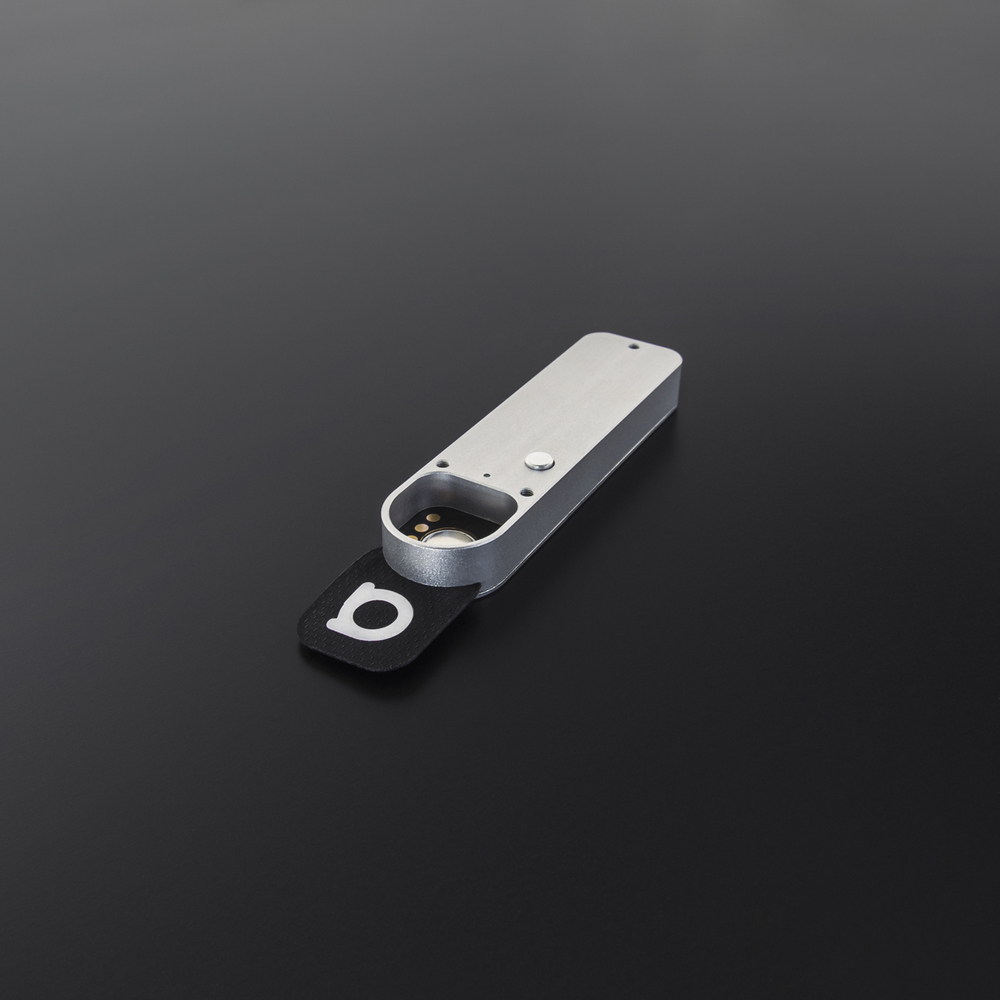Tag
Tag is a wireless lightweight Socket that can be attached to even a compact object because of its small size. Tag has a rechargeable battery and is fully functional while charging.
Low latency radio protocol
Tag can act as a client. In order to receive data the Host must have an access point, for example a Universal Radio Socket. Tag uses the Antilatency Radio Protocol to transmit data.
Battery
Tag has a built-in rechargeable battery that lasts for
1 hour in tracking mode. The USB Type-C port is used only to charge the battery.The Tag is fully functional while the battery is charging, including the transmission of tracking data from an Alt.
Battery charging speed is approximately equal to the discharge rate. Therefore, for continuous operation, you can use a pair of devices in Hot Swap mode: while one Tag is charging, the second one is in operation. Swap the devices every 60 minutes.
Compact design
Tag is highly portable (
9 × 18 × 66 mm) and weighs as little as 17 grams. You can secure a device with double-sided adhesive tape, but we highly recommend using the mounting holes for a tighter fit. In this case you will need the following types of screws: M2x10 DIN 912, M2x12 DIN 912.Technical specifications
Connectivity | 2.4 GHz proprietary Antilatency Radio Protocol (client mode) |
250 mAh Li-pol | |
Battery life | About 1 h in tracking mode |
Charging mode | Fully functional while charging |
Power requirements | 350 mA @ 5 V |
Ports | USB Type-C port for charging only |
RGB LED | |
Operating temperature | +5°C — +50°C |
Humidity | ≤75% (+25°C) |
Dimensions | 9 × 18 × 66 mm |
Weight | 17 g |
3D model
You can download Tag 3D model by clicking button
DownloadLED signals
| Indicator state | Device state |
|---|---|
Socket is charging. | |
Socket is fully charged. | |
Client is trying to find an access point to connect to. | |
Client is trying to find a specific access point ( MasterSN property is not empty). | |
Client is connected to an access point. The color should be identical on both devices. | |
Device error, it will be restarted in a few seconds. | |
Hardware error, the number of red blinks is the error code. |
